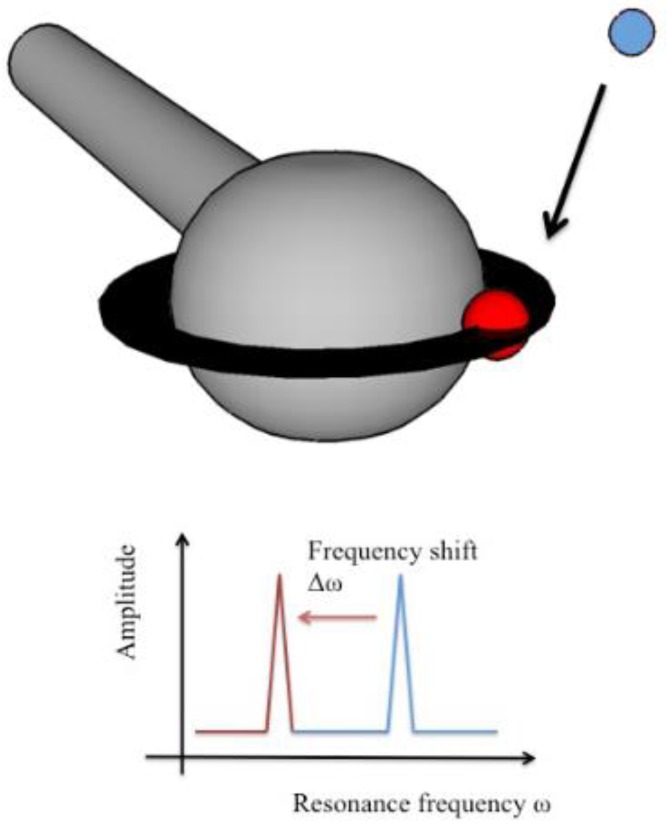Figure 1.
A model for WGM optical microcavity detection, based on [41] (adapted with permission). In the top image, light (thick black line around the device) enters a WGM optical microcavity, where it experiences total internal reflection (TIR) and generates an evanescent field. The evanescent field is an optical field extending to the surrounding environment and decreasing exponentially with the distance away from the resonator’s interface. When an analyte (red sphere), such as bacteria, binds or adsorbs onto the surface of the microsphere, it changes the effective refractive index of the circulating optical field resonator, and it pulls part of the evanescent field to the outside of the resonator. The expansion of the optical field’s boundary causes the round-trip wavelength of light to increase about 2πΔl. The increase in the optical field’s wavelength results in a corresponding frequency shift in the transmission spectrum (bottom image).

